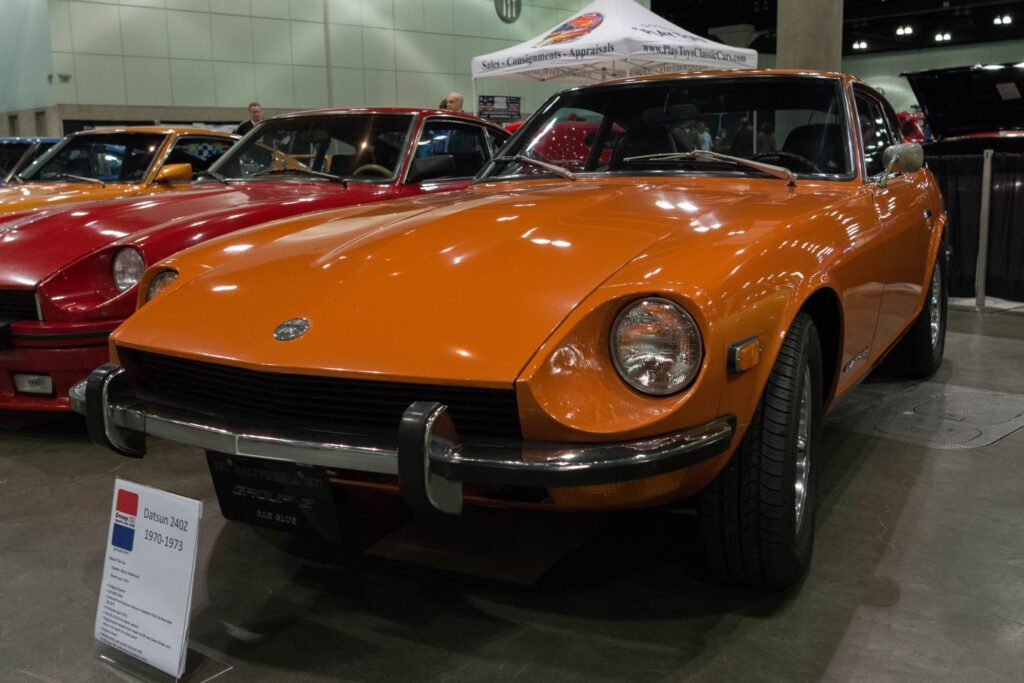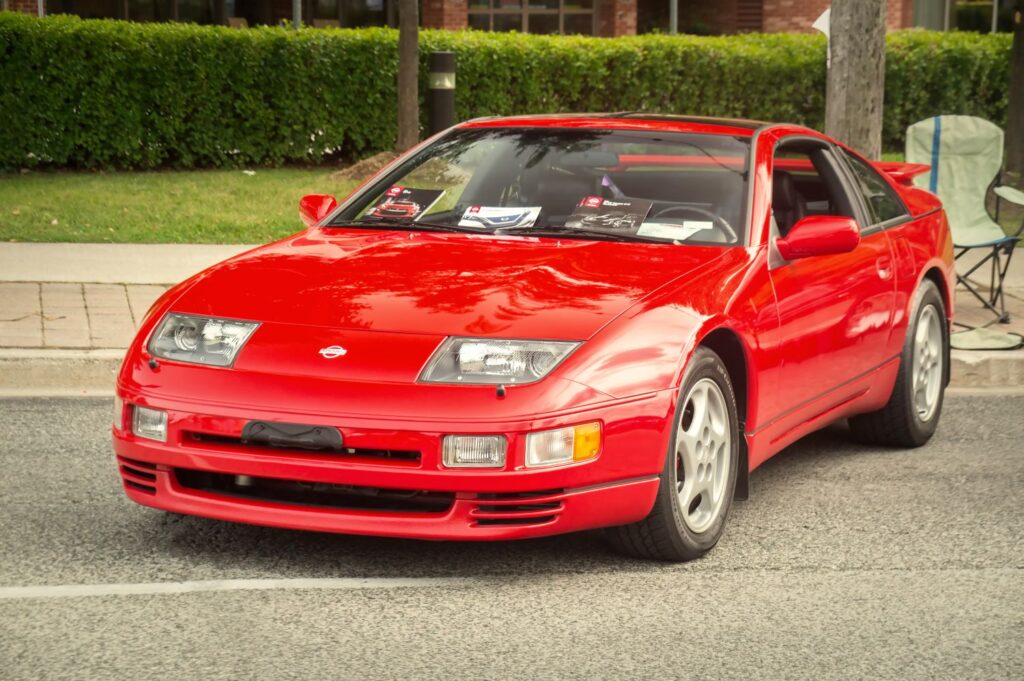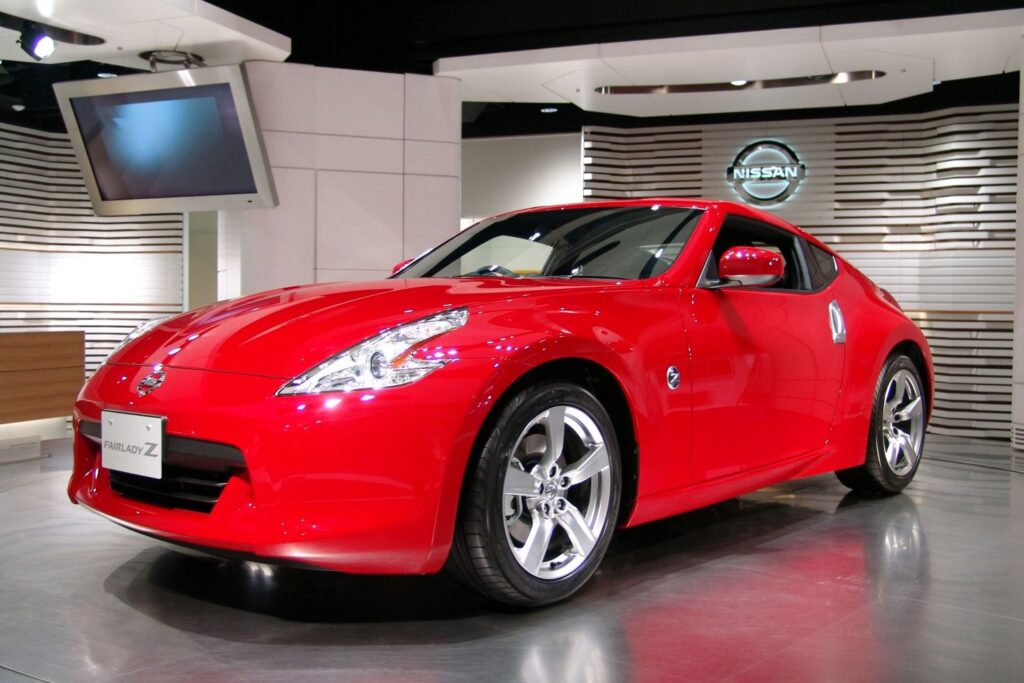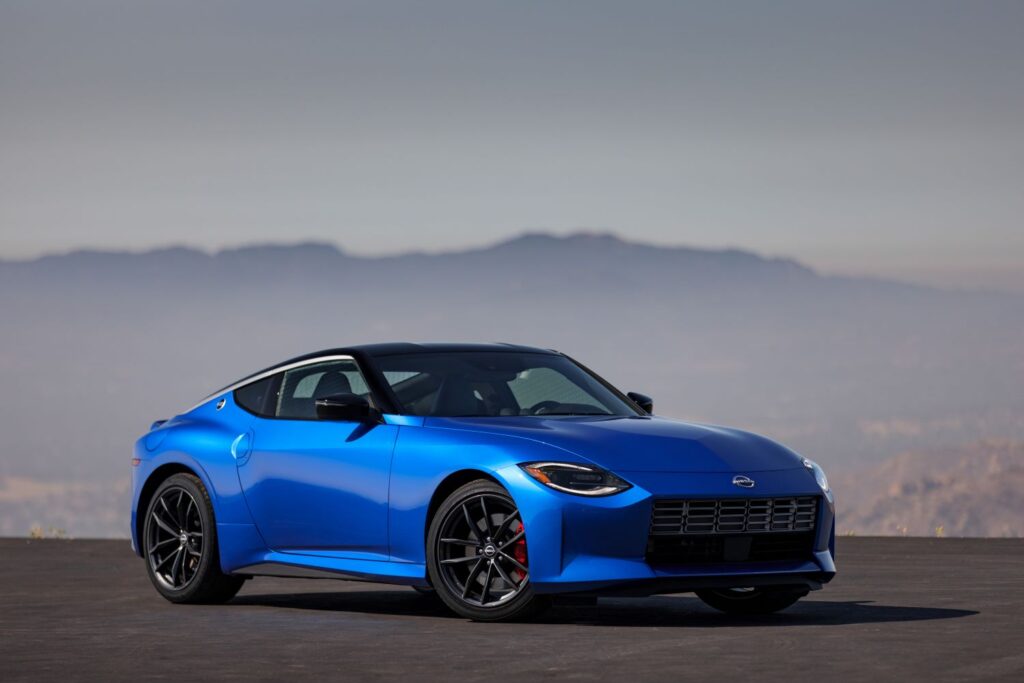For over five decades, the Nissan Z has been an icon in the world of sports cars. Enthusiasts love the Z because of its unique blend of performance, style, and affordability. We’ll discuss the history of the Nissan Z across its most recognizable and memorable generations. From the 240Z to its modern successors, we’ll go through the five best Nissan Z models in history and discuss their pitfalls and triumphs.

1970 Datsun 240Z – Budget Jaguar E-Type
It all began in 1969 with the introduction of the Datsun 240Z, a groundbreaking model that helped change America’s perception of Japanese sports cars. You might be wondering why it’s called the Datsun 240Z and not the Nissan 240Z. Nissan was called Datsun earlier in its history. The company started to use the Nissan name in the 1930s but kept the Datsun branding on its exported vehicles until 1986.
The 240Z had a 2.4-liter engine that produced 151 horsepower, which rivaled its more expensive competitors. With a top speed of 125 mph and a remarkable 0-60 time of just 8 seconds, the 240Z was quickly recognized as a top-tier option, establishing Datsun as a formidable contender in the global sports car market.
One thing that stood out with the 240Z was its shape, as the car was a small coupe with a long hood. It also had a sloping roof, which gave the vehicle a raindrop-like appearance. It made the small car look like it disproportionately allotted more space for its engine than its passengers. However, that wasn’t a bad thing at all. This design language made the car look like the iconic Jaguar E-Type, and it’s this design that subsequent Z’s would be built upon.
When it was released, the 240Z was priced at a modest $3,526, around $30,000 in today’s money. You can only imagine how much of a bargain the 240Z was at the time. You were getting an affordable Japanese sports car that looked like a British icon.
- Engine: 2.4-liter 6-cylinder
- Power: 151 hp
- Torque: 146 lb-ft
- 0 to 60: 8.0 seconds

1990 300ZX Z32 – Innovations and Pitfalls
When the 300ZX Z32 update was released, car culture was on the rise and practically every sporty Japanese-made car was a canvas for its owner and their desire to modify. Many 300ZX vehicles were adorned with body kits and upgraded wheels and exhausts.
Compared to many of its rivals, the Nissan 300ZX was filled to the brim with innovative features. Unfortunately, many of the gadgets fitted into the 300ZX gave it a mixed reputation, as they weren’t very reliable or simply didn’t age well.
One of these systems is electronically controlled variable valve timing, which was revolutionary at the time because it allowed cars to be powerful and efficient at the same time. Trouble only came when these early electronic systems encountered issues, as they were quite difficult to fix. Another system that Nissan adopted early was four-wheel steering called High Capacity Actively Controlled Steering (HICAS), which was meant to help vehicle stability in high-speed corners. The system was controlled electronically and used an electric motor to turn the rear wheels.
Nevertheless, the 300ZX Z32 was incredibly competitive during the time, even beating its rivals like the Porsche 911, Mazda RX-7, and Chevrolet Corvette when it came to automotive critics’ reviews. It was also beating them out in terms of looks. Many vehicles had pointy, sloping hoods at the time to present a high-performance aerodynamic shape. Z32 designers came up with innovative projector headlights so that the glass could sit flush with the hood angle. It achieved such a good look that Lamborghini borrowed Nissan’s headlights for the Diablo.
- Engine: 3.0-liter Dual-Overhead Cam Twin-Turbo V6
- Power: 300 hp
- Torque: 283 ft-lb
- 0 to 60: 5.2 seconds
- Top Speed: 155 mph (electronically limited)

2002 350Z – The Turbocharged Debate
Between 1997 and 2002, Nissan didn’t send any of its Z-line cars to the US. However, this changed in 2002 when the company released the 350Z. The fifth-generation Z was built atop the same front-mid engine architecture found in cars like the Infiniti G35. The 350Z started with an attractive $26,809 base model. Meanwhile, the 350Z with a body kit and Brembo brakes was $34,619.
In terms of visuals and aesthetics, the 350Z was a complete revolution of the Z look. It incorporated significantly more curves than the 300ZX, as it had a fastback-style shape while still paying tribute to the long hood found in earlier Z models. Design-wise, the 350Z still had the Z DNA, as it certainly looked like a race car. It had decently flared wheel arches and a rear tail light that tapered down to the dual exhausts.
The 3.5-liter engine VQ-series engine received both a lot of praise and criticism. Some loved the fact that the Z returned to a naturally aspirated V6, as during this time turbocharged engines often had turbo lag. However, others looked down on the choice for two reasons. For one, the engine was shared with other less-sporty Nissan models, which made the Japanese manufacturer look like it just recycled one of its engines rather than develop one that was specifically made for a sports car. Secondly, the previous 300ZX had two turbochargers, which actually gave the previous generation more power. You can only imagine the dismay of some loyal fans to find that they’ve waited 12 years for a new Z, only for it to have less power. That said, the VQ35DE was still a great motor because it was incredibly reliable.
Going to a naturally aspirated engine wasn’t all bad. The 350Z had power and torque throughout a wider rev range rather than just at the top end. You could reach 60 mph in 5.5 seconds from a standstill. The short-shift 6-speed manual was also alarmingly rapid, albeit a little notchy.
- Engine: VQ35DE 3.5-liter V6 Engine
- Power: 287 hp
- Torque: 274 lb-ft
- 0 to 60: 5.4 seconds

2008 370Z – An Aging Gem
According to Nissan, the 370Z was an enhancement to the 350Z. It had a larger, 3.7-liter V6, a lower ride height, and new suspension.
It had a shorter wheelbase than its predecessor and was lighter because it had a lot of components that were made out of aluminum. When it comes to the driving experience, the 370Z still had the visceral driving characteristics that pleased purists. It was even fitted with Nissan’s SynchroRev Match system, which gave the manual version rev-matching capabilities. In 2010, a roadster version with a power convertible top was added to the line.
However, by 2013 other vehicle manufacturers were quickly switching over to a more modern and sharper design language. During this time, the 370Z’s age was already starting to show and its sales continuously spiraled. Nissan would release special Nismo and Nurburgring editions to please consumers, but it wasn’t enough to stem the tide.
- Engine: 3.7-liter V6
- Power: 330 hp
- Torque: 270 lb-ft
- 0 to 60: 5 seconds

2023 Nissan Z – The Z to Rule Them All
Most car models incorporate modern design trends whenever a new generation is released. You can see this throughout each Z release. However, the latest Z also has small but clear hints of retro styling. These are evident in the rear tail lights, which uniformly cover the rear with a rectangular block like the rear lights found in the second-generation 1979 Nissan 300ZX.
According to some automotive critics, the new Z is the best-driving one yet. It retains the exciting and engaged driving experience that the Z is known for. Despite being fitted with modern technology and features, its steering, brakes, and engine are as communicative and sharp as its previous iterations. The new Z is also the most powerful ever, with a 400-horsepower twin-turbo engine. Unlike the previous 370Z, the new Z is shaping up to be a worthy competitor in the sports car segment.
- Engine: 3.0-liter twin-turbo DOHC V6
- Power: 400hp
- Torque: 350 lb-ft
- 0 to 60: 4.5 seconds
Throughout its history, the Nissan Z was always an attainable sports car. Despite the fierce competition from its rivals, the Nissan Z’s affordability and looks make it an incredibly compelling deal. Any Z model can still attract a bunch of looks from people whenever it drives down a busy street. Moreover, the Nissan Z could always satisfy an enthusiast’s need for a visceral and enjoyable driving experience in a vehicle that won’t cost an arm and a leg.
Mixed Views on the Nissan Z
While there are a lot of sports car enthusiasts who rally behind the Nissan Z’s greatness, there are also a handful of critics who don’t share the same views.
The 2023 Nissan Z, for instance, while aligning itself with coupes like the Toyota GR86 and Subaru BRZ, doesn’t seem to perform the same way, according to some critics.
The 2023 Nissan Z is applauded for its trail-braking capabilities and flexible powerband, but some believe that the model is only good up to 80% of its full capacity.
According to some drivers who got to take out the Nissan Z for a test drive, the under-sprung chassis leads to a slow weight transfer, so it takes some time for the chassis to set in the corners.
Also, the lack of balance between the throttle and chassis seems apparent as the speed increases.
Still, the Nissan Z and its various redesigns have received praise from many owners, with some even applauding the model’s overall reliability.

Like any other make and model, regular maintenance and good driving practices can easily get the Nissan Z past the 200,000-mile mark. Some owners even reported their Nissan Zs running smoothly past 300,000 miles.
Nissan Z models vary in terms of reliability, with some not even cracking the top five due to recurring issues.
The 2009, 2011, 2015, and 2017 redesigns of the Nissan Z are regarded as the most reliable years for the model.
Meanwhile, models like the 2010 Nissan Z didn’t have the same positive feedback as the other years due to a faulty steering wheel lock.
A lot of factors can affect the longevity of the Nissan Z, including the following:
- Excessive oil consumption
- Transmission problems
- Overheating
- Suspension wear
- Braking problems
- Electrical faults
Where to Get High-Quality Auto Parts and Accessories for Your Nissan Z
Whenever you need new parts or accessories for your Nissan Z, look for high-quality products that will last the lifespan of your vehicle. CarParts.com makes shopping for replacement parts and aftermarket accessories easier with our wide array of OE-quality Nissan Z auto parts.
Our website has a great selection of direct-fit parts and accessories sourced from trusted manufacturers, taking the guesswork out of finding compatible products for your ride.
Enter your Nissan Z’s year, make, and model into our website’s vehicle selector to start shopping for the parts you need. For a personalized shopping experience, use our search filters to browse parts according to your preferred brand, price range, quantity, and more.
We only offer products that pass the highest quality control standards from industry professionals, so you’re sure to get replacement parts that are durable and dependable.
Our products also come with a lifetime replacement and low-price guarantee, helping you get the best value for your money. Order now, and we’ll deliver directly to your doorstep in as fast as two business days.
Shop and grab our best deals today!
Any information provided on this Website is for informational purposes only and is not intended to replace consultation with a professional mechanic. The accuracy and timeliness of the information may change from the time of publication.



















